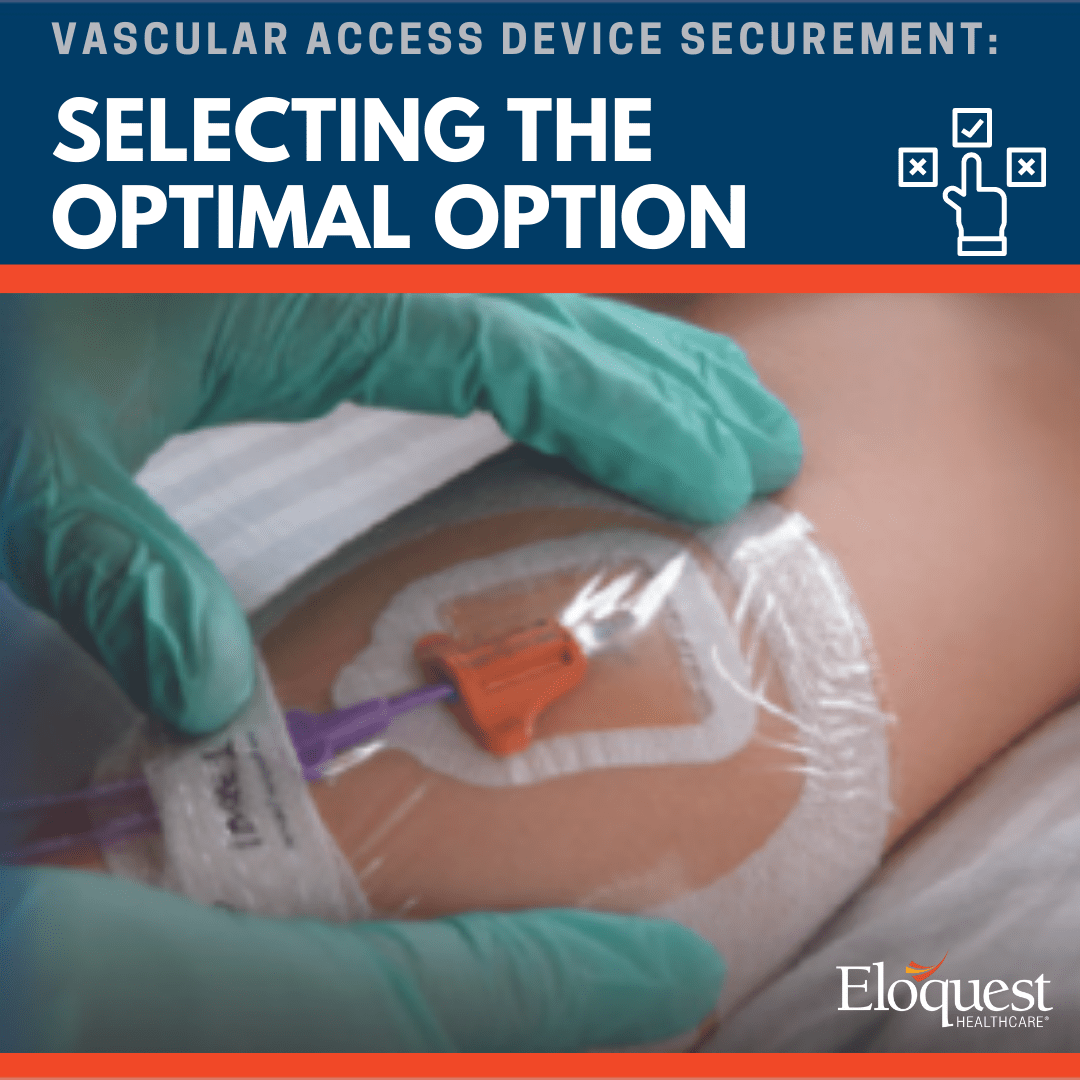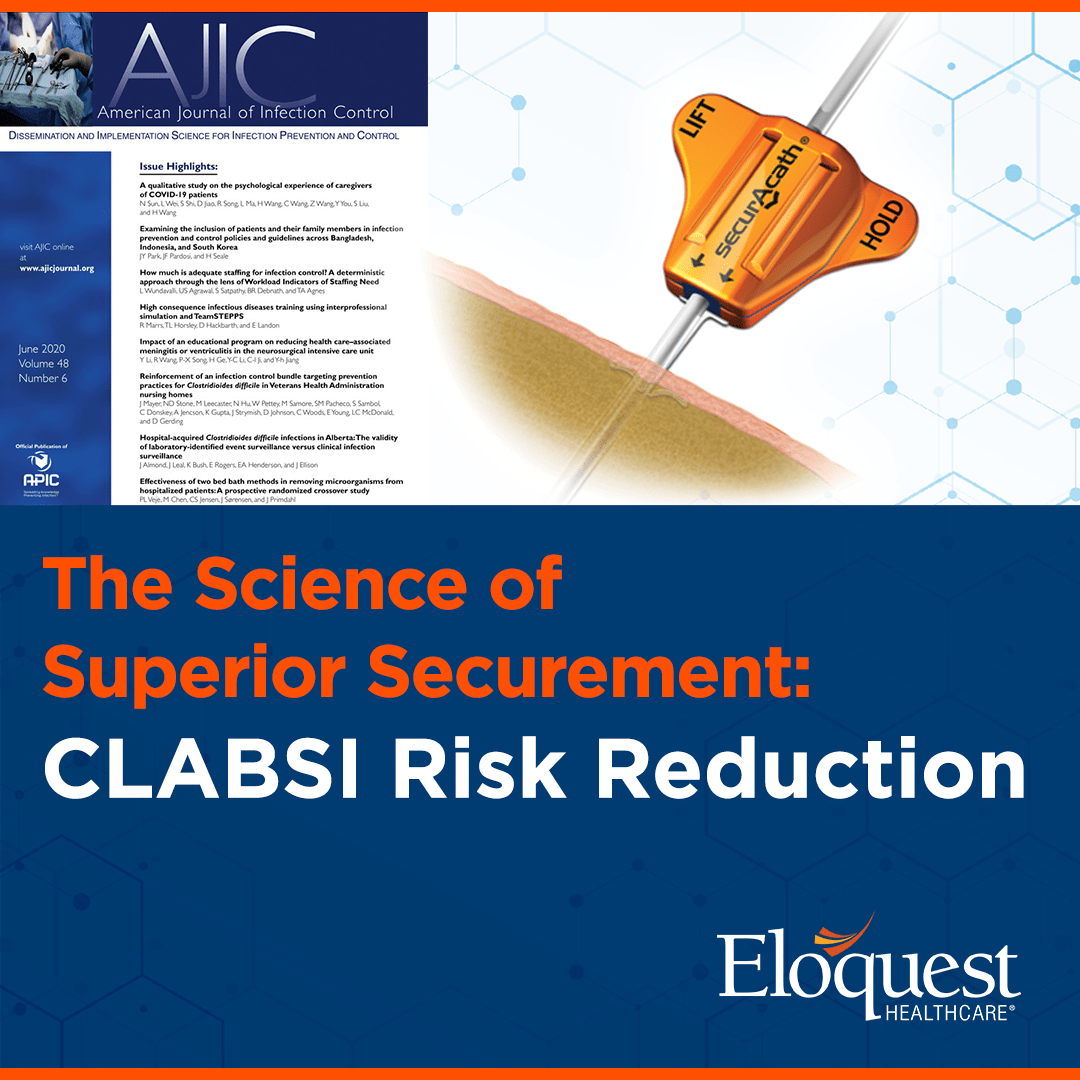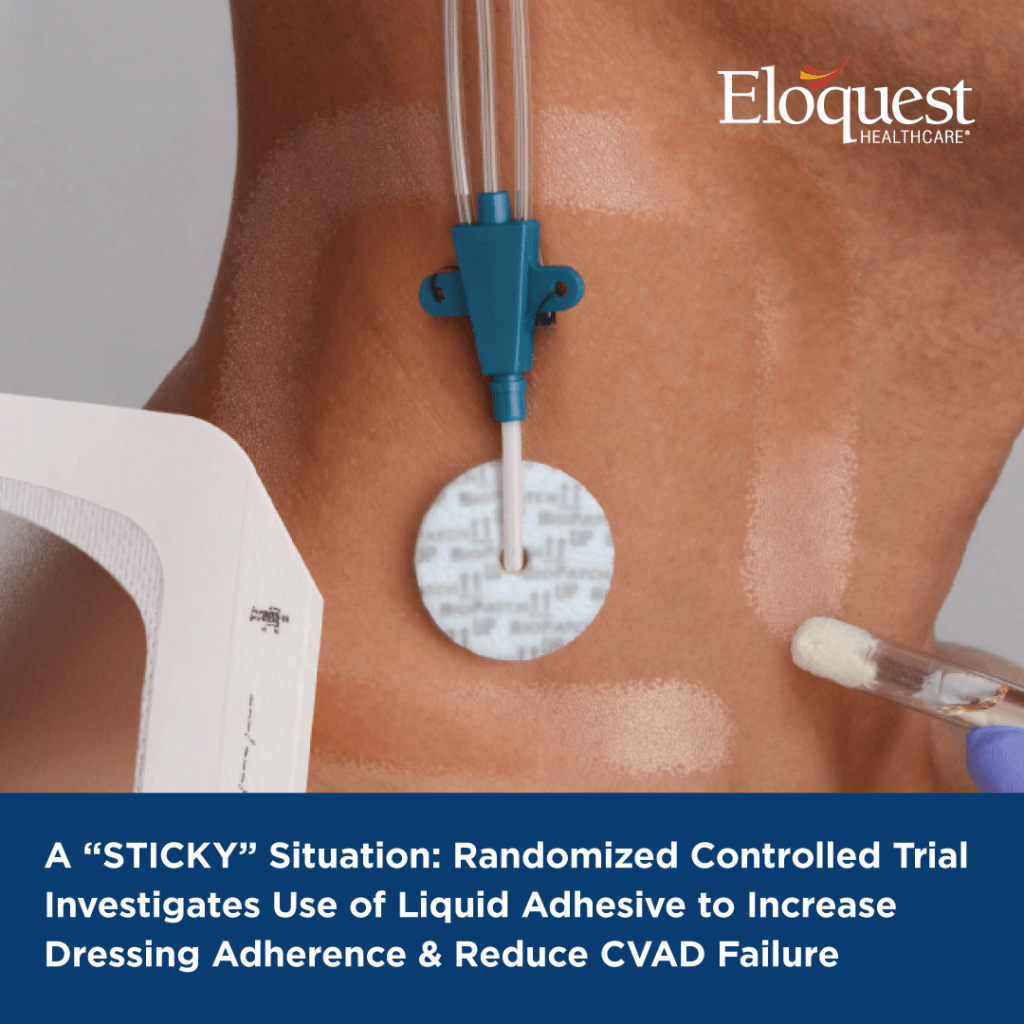
As 2022 ends, we would like to thank you for reading the Eloquest Healthcare Blog! We hope you have found our posts during the last 12 months to be both informative and impactful to your professional career. Here are some of the past year’s highlights that we invite you to visit…
One of our favorite posts of the year arrived in February with a review of ‘Dr. LeDonne’s Top Tips for Modern Vascular Access’ where he shared his top recommendations for ‘Modern Vascular Access Related to Central Vascular Access Devices (CVADS)’ and outlined the major benefit of Vascular Access Standardization in the ‘Life Cycle of Central Venous Catheters’. Learn more and implement his best practices into your practice: The Goal, The Assessment, The Insertion, The Achievement, The Proof and The Solution for Vascular Access Standardization can all be found here!
In ‘Vascular Access Device Securement: Selecting the Optimal Option’, we explored vascular access device (VAD) securement options and learned about patient-related factors that need to be considered when selecting a VAD securement technique. Taking the appropriate measures to secure a VAD contributes to device longevity and functionality throughout the duration of treatment and proves to be imperative in reducing complications – such as infection and dislodgement – that emerge with VAD failure and malposition.
In ‘The Science of Superior Securement: CLABSI Risk Reduction’ we furthered our exploration of VAD securement with a comparative observational study conducted by clinical expert, Mark Rowe, MNSc, BSN, RNP, VA-BC et al that reviewed two common practices utilized in the securement of intravascular catheters and each method’s directional impact on CLABSI rates. The review revealed a substantial difference in relative infection risk between the two methods of securement. Patient use of Subcutaneous Engineered Securement Devices (SESDs), namely SecurAcath, resulted in significantly better patient and hospital outcomes when compared to patient use of Adhesive Engineered Securement Devices (AESDs)
In ‘New Evidence on Improving Driveline Dressing Durability’, we shifted our focus to standard vascular access device dressing practices with a study conducted by clinical expert Abigail Vowels, RN, BSN that provided clinical proof of benefits that accompany the application of gum mastic liquid adhesive in the plan for care in patients with advanced heart failure and a Left Ventricular Assist Device (LVAD). Vowel’s study provides attestation that adding gum mastic liquid adhesive and liquid adhesive remover, paired with patient & caregiver training, significantly improves dressing integrity and durability.
A fan favorite continues to be our “3 Questions with…” vlog series! This year notable experts in their respective fields: Jon Bell RN MSN VA-BC, Edward Korycka RN, Mark Rowe MNSc RNP VA-BC and Mary Smith RN VA-BC President CVC Healthcare LLC answered questions and provided insights on current clinical practice. View our “3 Questions with…” vlog library here!
Clinical Evidence: Current Research & Summaries
As a leader in providing products that support improved patient outcomes, we rounded out the year with updates on current research and summaries of the latest data related to vascular access best practices.
In “Summary: Systematic Review of the Safety and Efficacy of Central Vascular Access Device Securement” we explore CVAD securement-method safety and efficacy outcomes and learn of the clear benefits presented by a Subcutaneous Anchor Securement System (SASS), such as SecurAcath®.
This evidence was further supported in “A Decade of Security – New Study Adds Much Needed Data Comparing CVAD Securement Methods” where we highlighted a landmark study presented at the 2022 World Congress on Vascular access (WoCoVA).
Switching gears from VAD Securement to securing VAD dressings, in “A “STICKY” Situation: Randomized Controlled Trial Investigates Use of Liquid Adhesive to Increase Dressing Adherence & Reduce CVAD Failure” we introduced a randomized controlled trial designed to test whether or not the application of Mastisol® Liquid Adhesive (MLA) can improve internal jugular vein dressing adherence and lead to better CVAD care for patients. Results are expected to be published in mid-2023 so be sure to subscribe to the Eloquest Healthcare Blog to ensure you receive updates as the study progresses.
Looking forward to 2023, we are excited to lead and share the constant change and improvements taking place in the realms of hospital quality, patient safety and HAI reduction! Make sure to subscribe to the Eloquest Healthcare Blog below so you don’t miss out on career excelling content in the year ahead. For more information about Mastisol®, Detachol® and SecurAcath®, please contact your Eloquest Healthcare® sales consultant, or request a follow-up here.
















